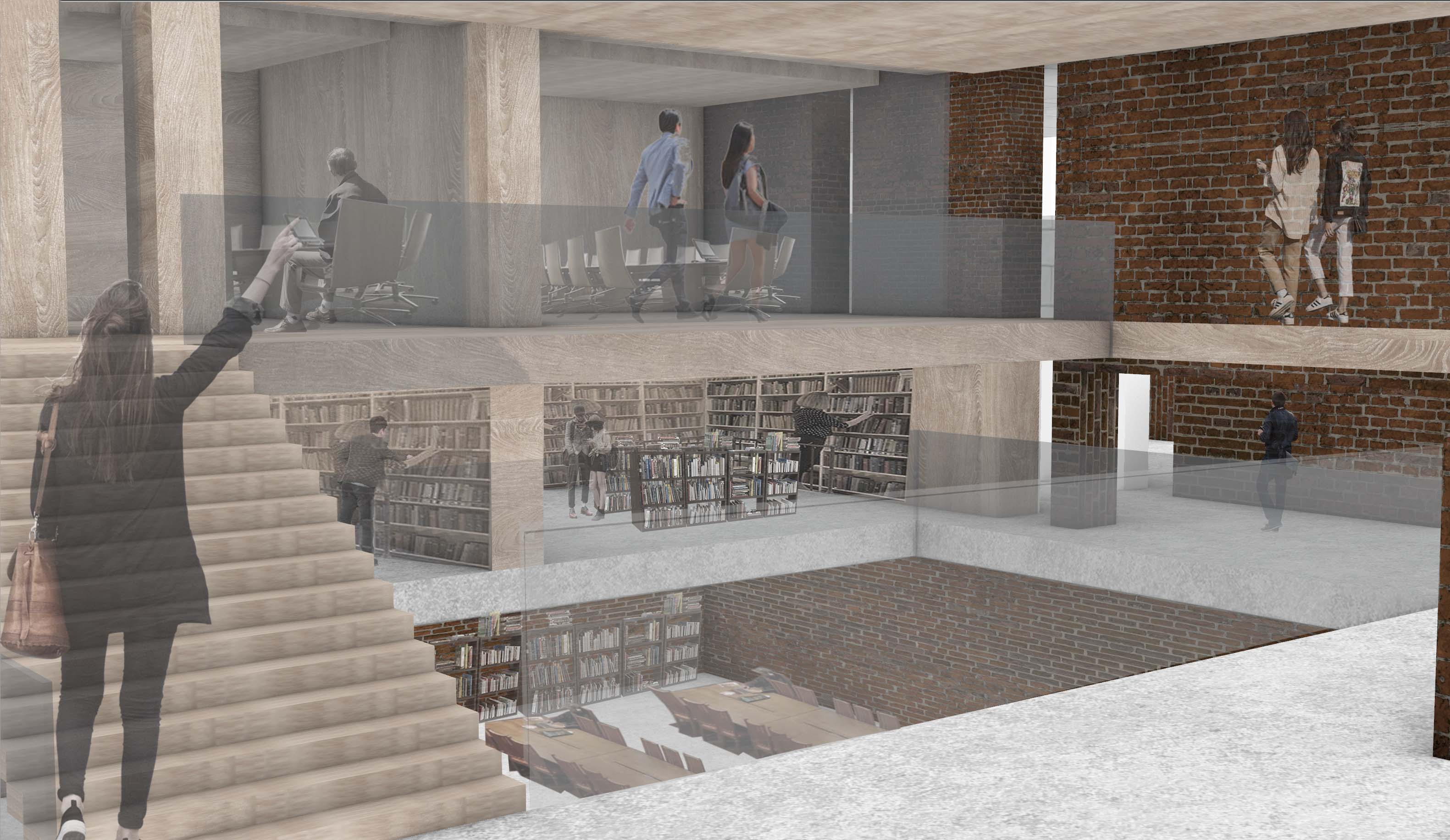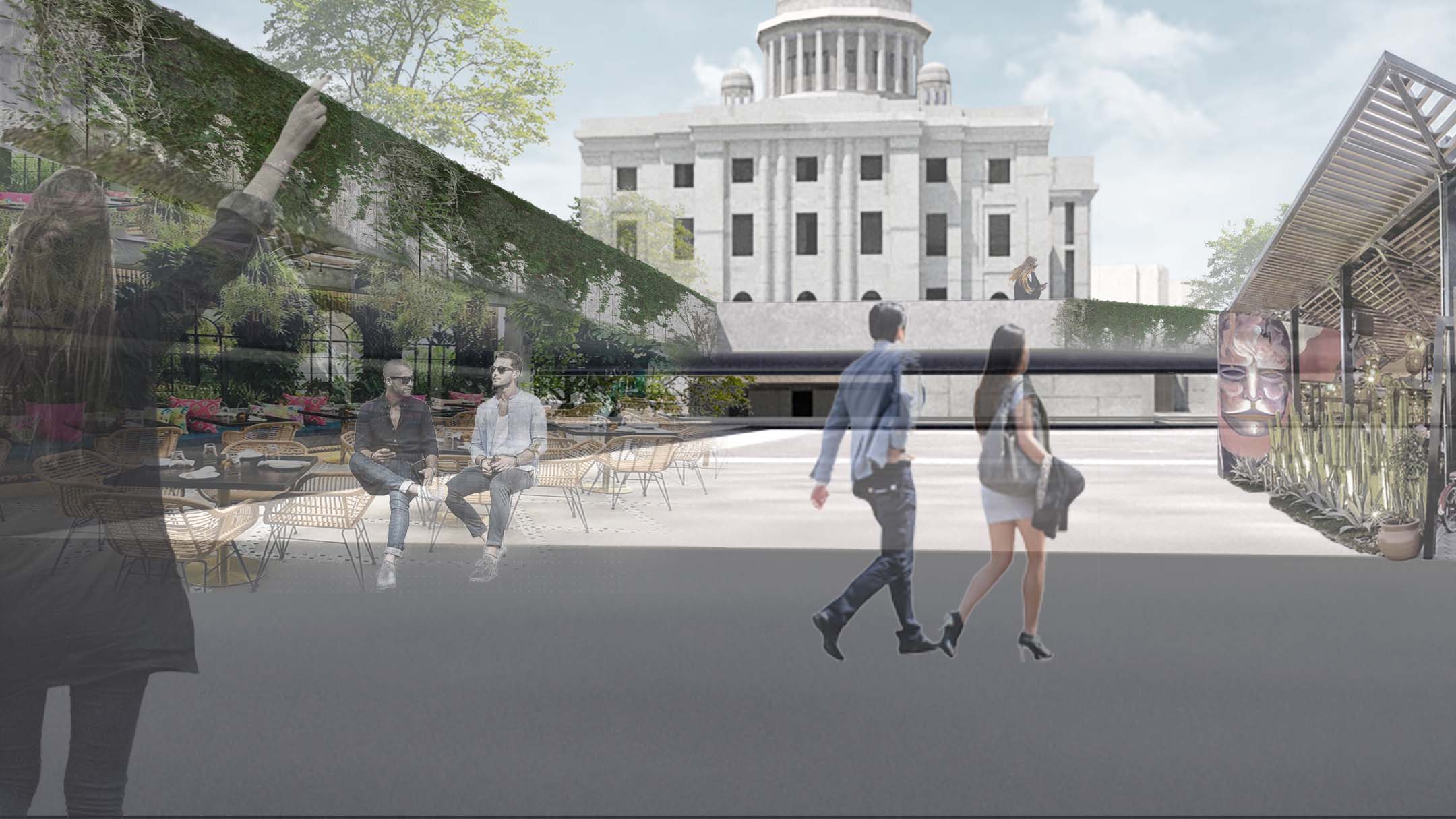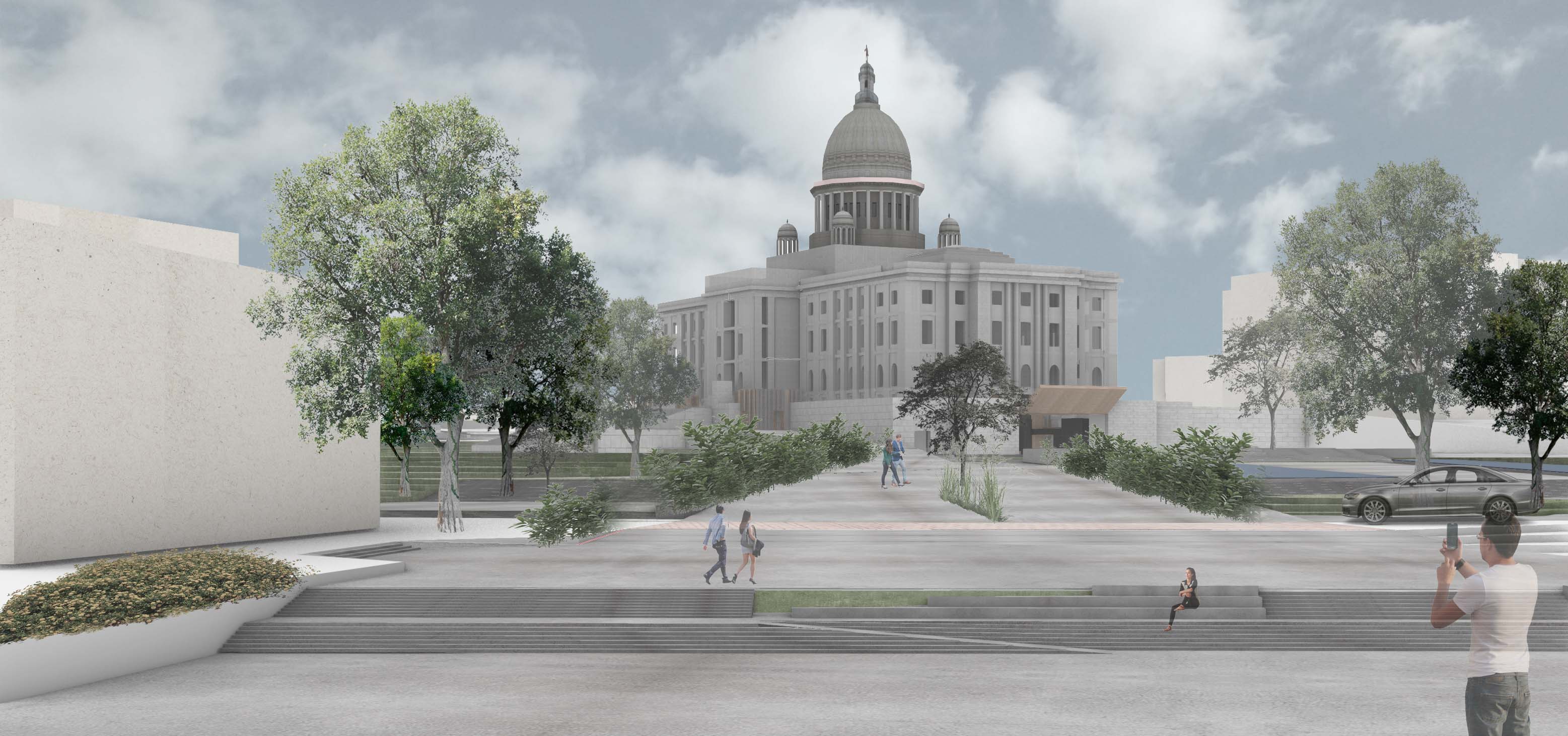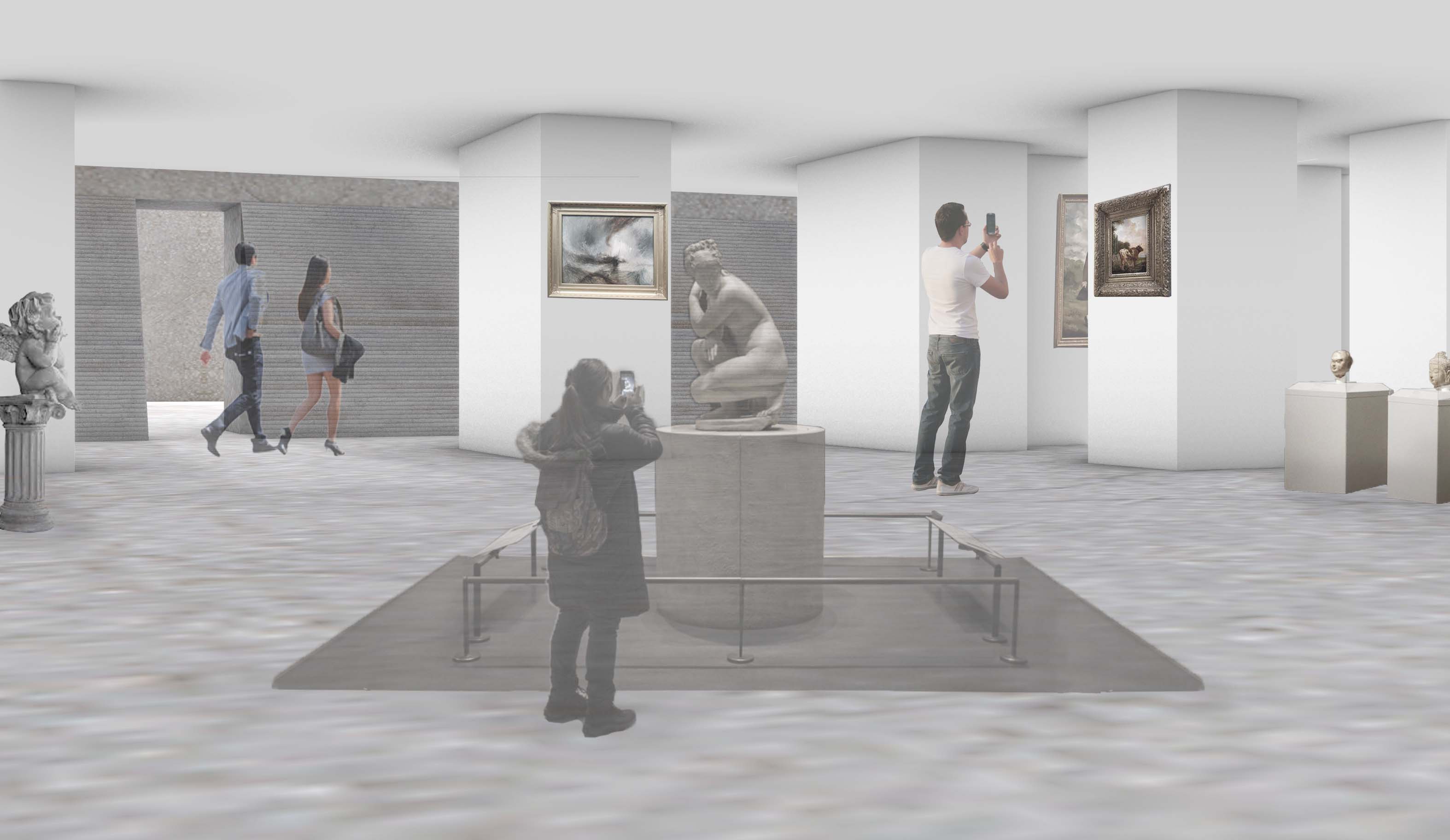State House Cultural Center
A space for arts, theater, and
educationSofia Massu
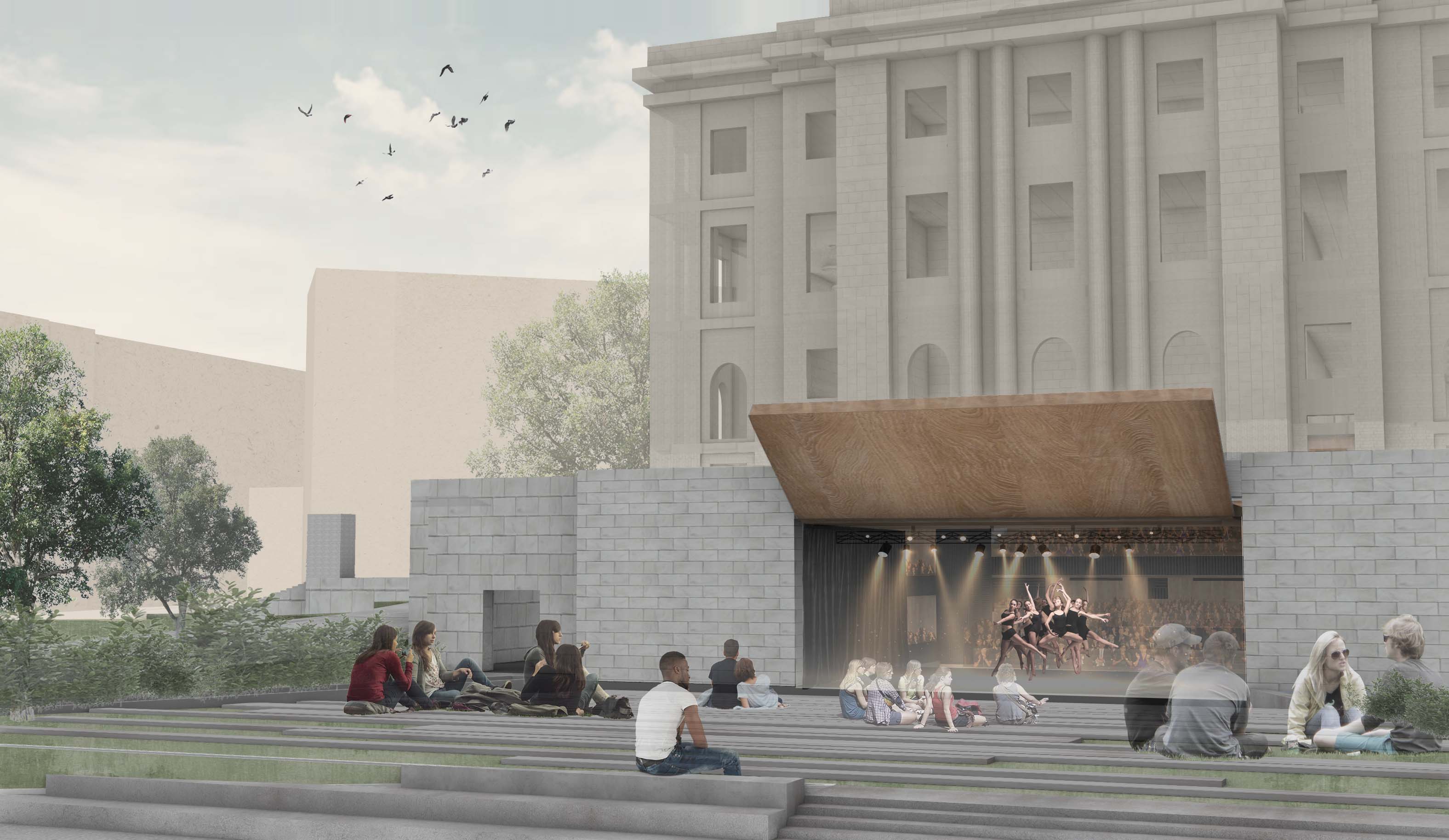
Standing in what used to be the cove, the Rhode Island State House has been isolated from the city by dividing elements of the urban fabric in Providence. With the projection of the inner program and installations to the exterior, along the east-west axis, the cultural center breaks through some of these elements with the intention of bringing people closer to the building. The project proposes a recreational and educational program in the building, returning some of the role that the cove used to play in Providence's social life as a gathering location.

Located in the sub-basement and part of the basement, it stretches along the east-west axis
and extends the State House’s boundaries into both directions.
Its centerpiece is a theater/music hall in the eastern wing whose stage can open to an outside lawn during the summer months, to reach additional segments of the public during performances. Spaces for a permanent collection of art, temporary exhibitions and performances, as well as an archive and education spaces will occupy the central and western parts of the basement.
Its centerpiece is a theater/music hall in the eastern wing whose stage can open to an outside lawn during the summer months, to reach additional segments of the public during performances. Spaces for a permanent collection of art, temporary exhibitions and performances, as well as an archive and education spaces will occupy the central and western parts of the basement.
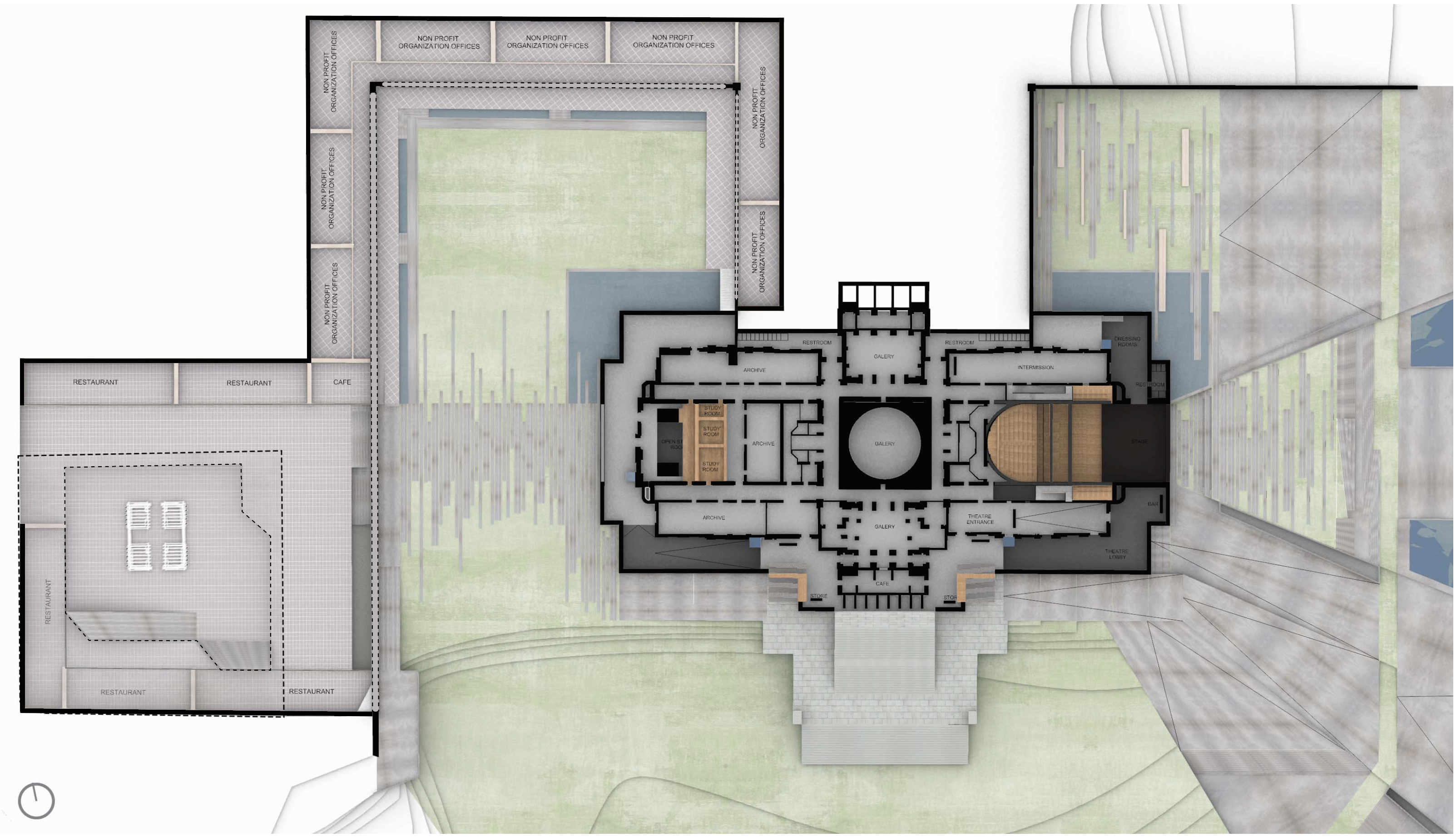
To the west, stone paving extends across the sunken courtyard, through a wide passage under
Francis Street, into a new sunken courtyard with a restaurant as an anchor. A wide flank of
stairs links it to the plaza fronting the Veterans Memorial Auditorium and the Renaissance
Hotel, thus linking them to the State House Cultural Center. Arcades along the northern edge of
the new sunken courtyard and along the western and northern edge of the existing sunken
courtyard front offices for nonprofit organizations and government needs. Two well-lighted
glass entry pavilions to the theater and exhibition wings flanking the monumental stair
approach to the State House announce palpably the presence of The State House Cultural
Center to the public.
